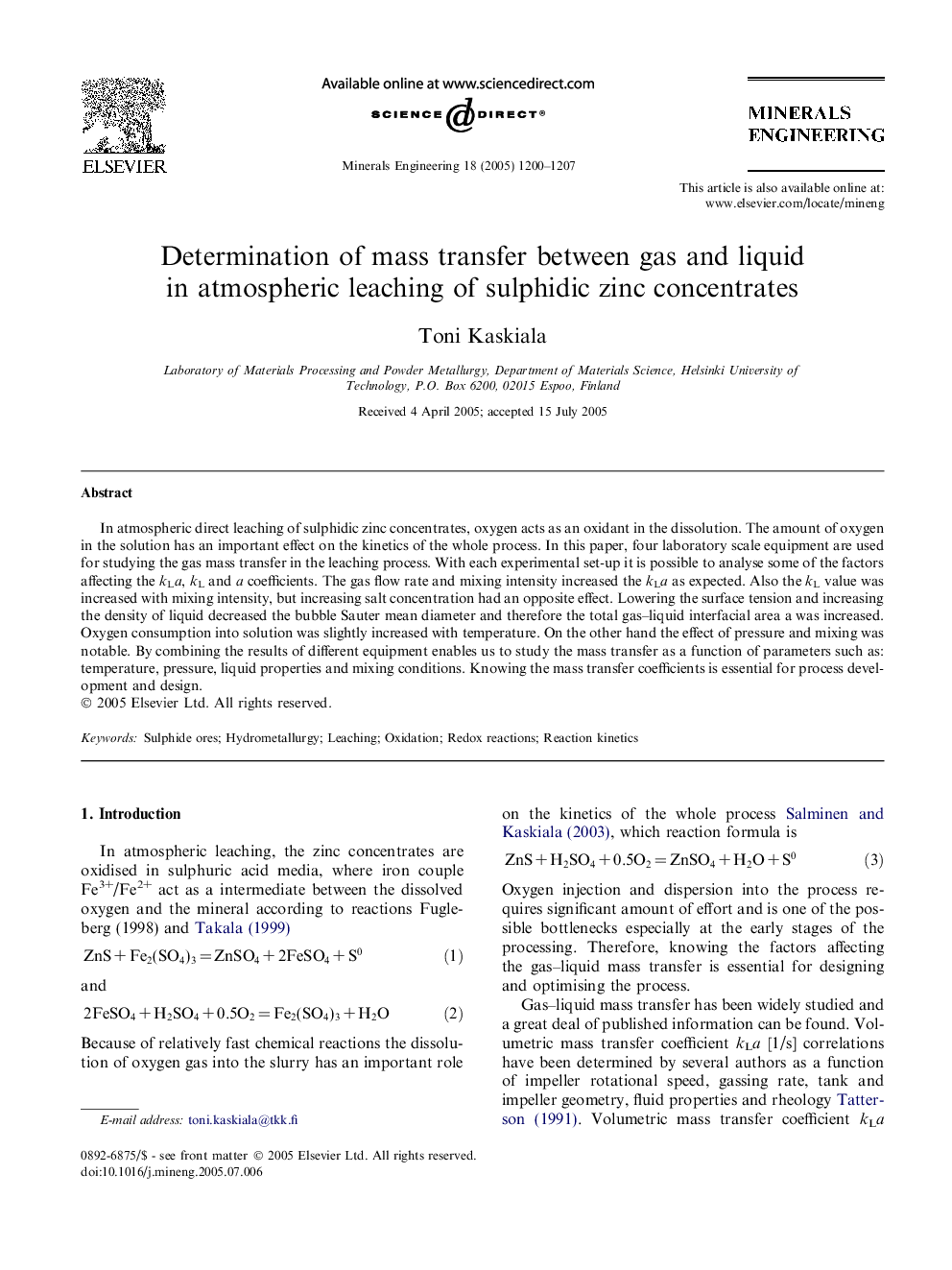| Article ID | Journal | Published Year | Pages | File Type |
|---|---|---|---|---|
| 10279735 | Minerals Engineering | 2005 | 8 Pages |
Abstract
In atmospheric direct leaching of sulphidic zinc concentrates, oxygen acts as an oxidant in the dissolution. The amount of oxygen in the solution has an important effect on the kinetics of the whole process. In this paper, four laboratory scale equipment are used for studying the gas mass transfer in the leaching process. With each experimental set-up it is possible to analyse some of the factors affecting the kLa, kL and a coefficients. The gas flow rate and mixing intensity increased the kLa as expected. Also the kL value was increased with mixing intensity, but increasing salt concentration had an opposite effect. Lowering the surface tension and increasing the density of liquid decreased the bubble Sauter mean diameter and therefore the total gas-liquid interfacial area a was increased. Oxygen consumption into solution was slightly increased with temperature. On the other hand the effect of pressure and mixing was notable. By combining the results of different equipment enables us to study the mass transfer as a function of parameters such as: temperature, pressure, liquid properties and mixing conditions. Knowing the mass transfer coefficients is essential for process development and design.
Related Topics
Physical Sciences and Engineering
Chemical Engineering
Chemical Engineering (General)
Authors
Toni Kaskiala,
